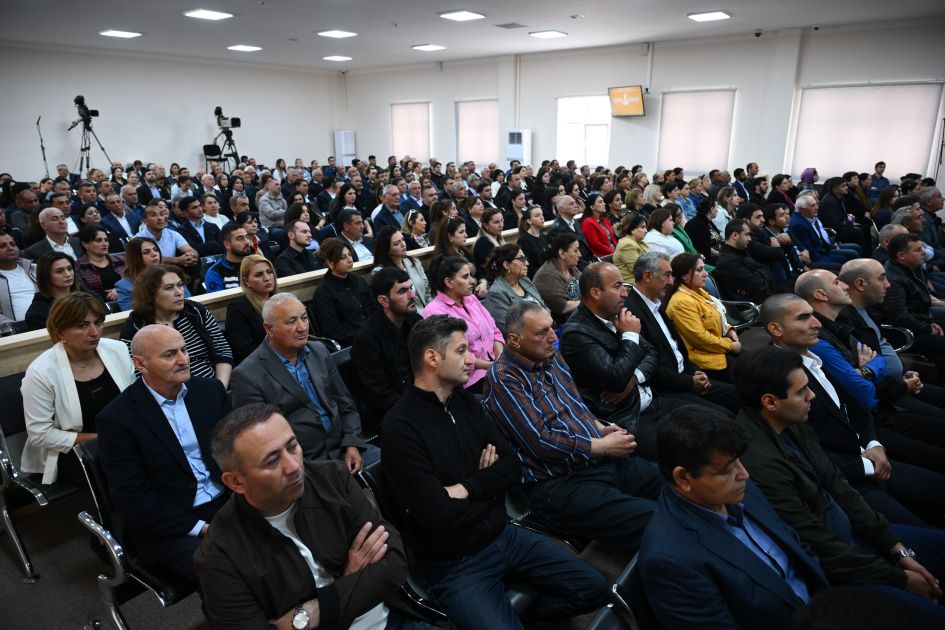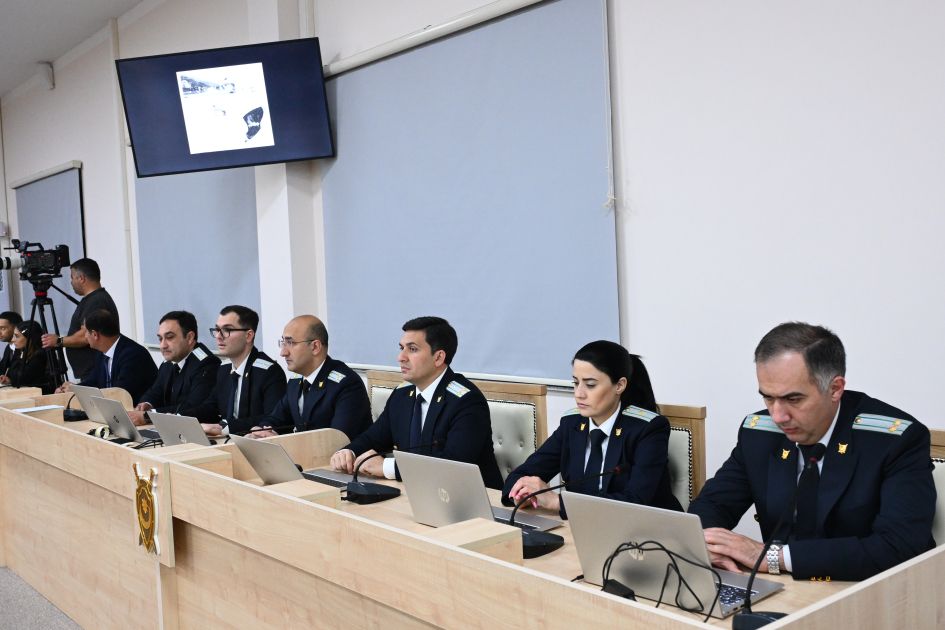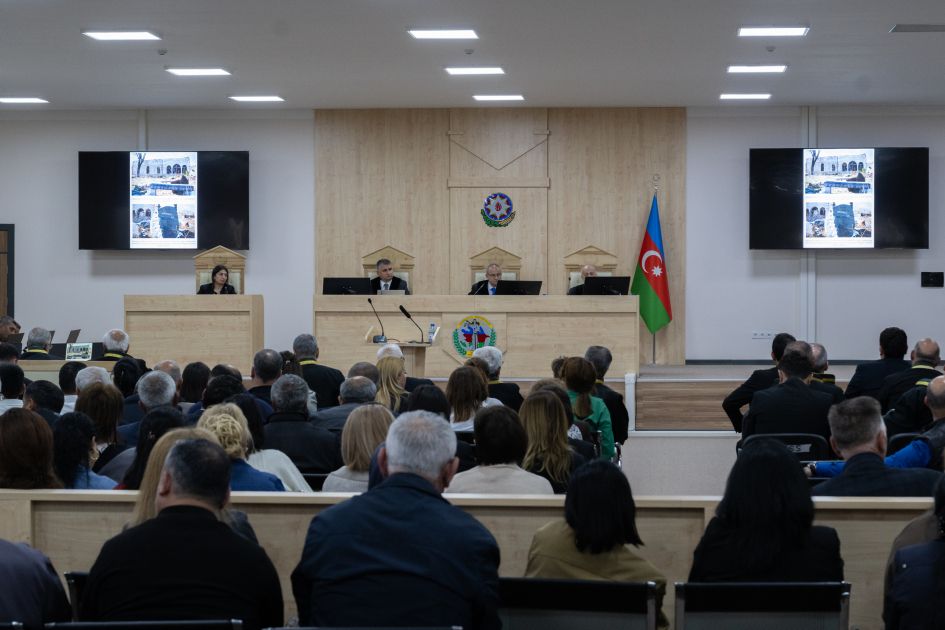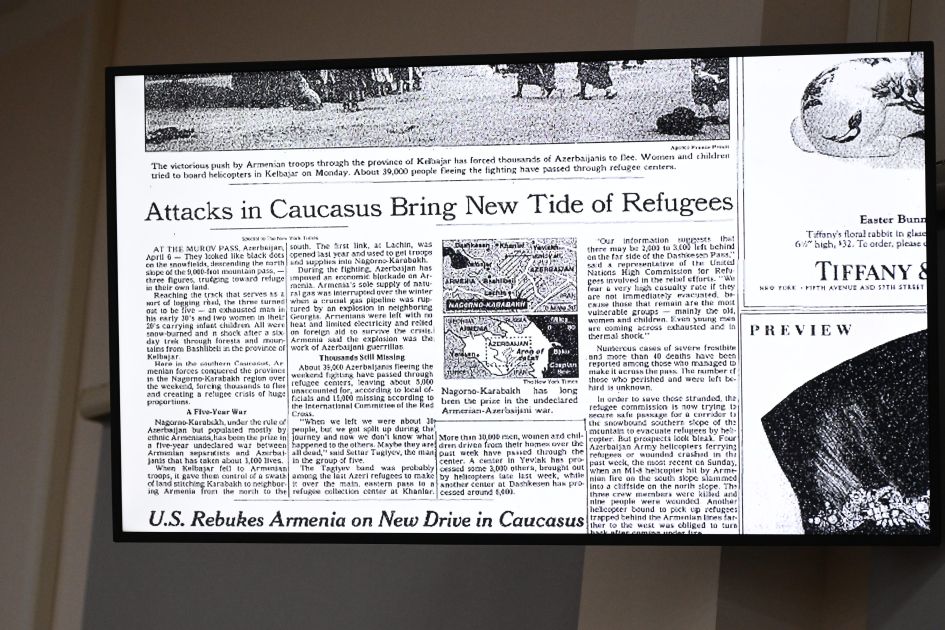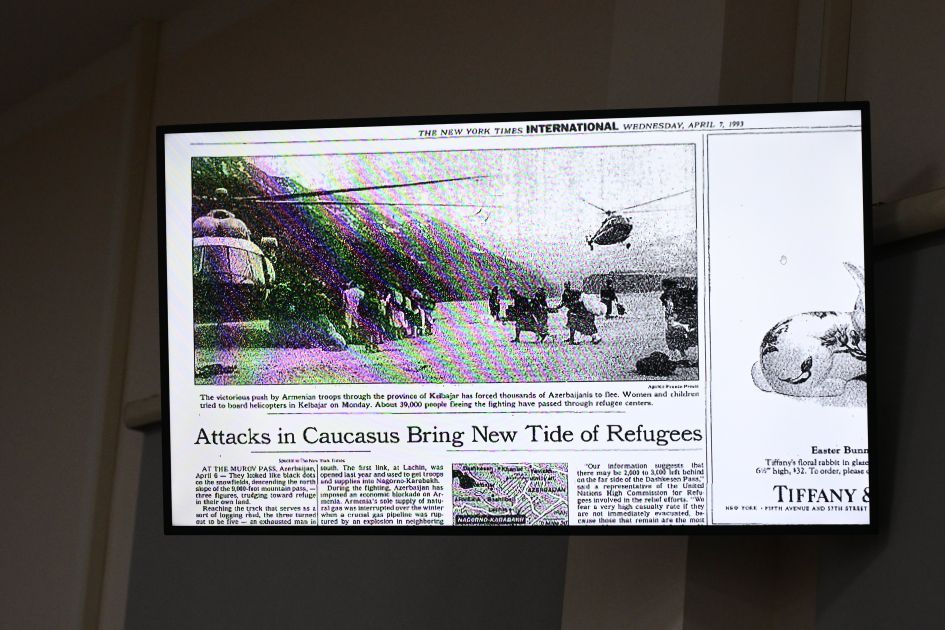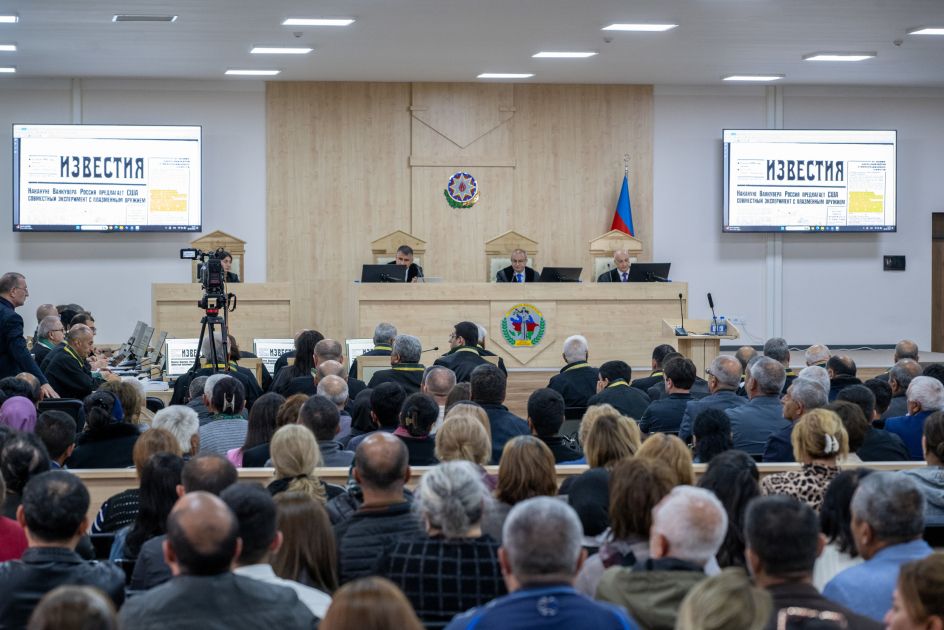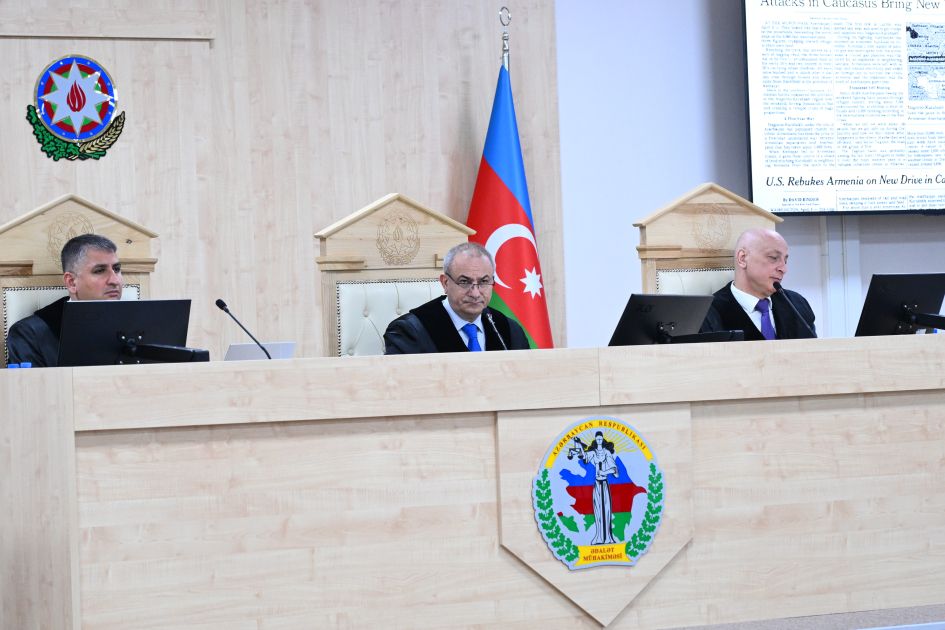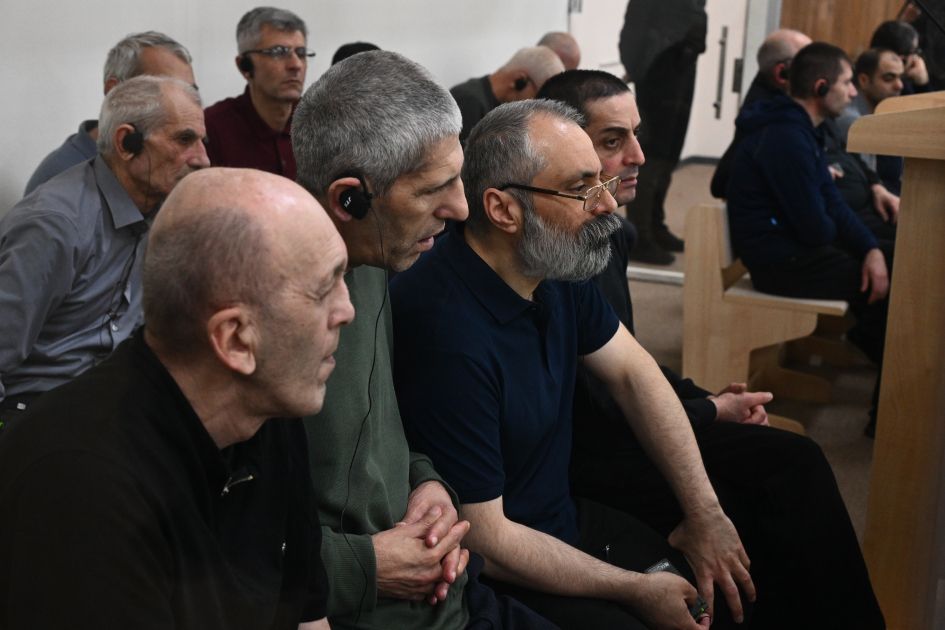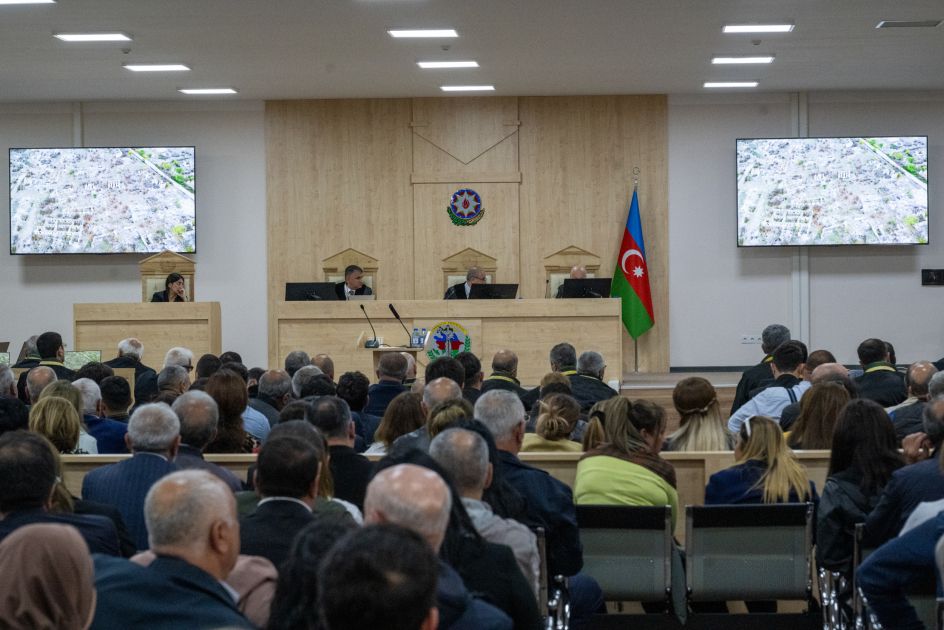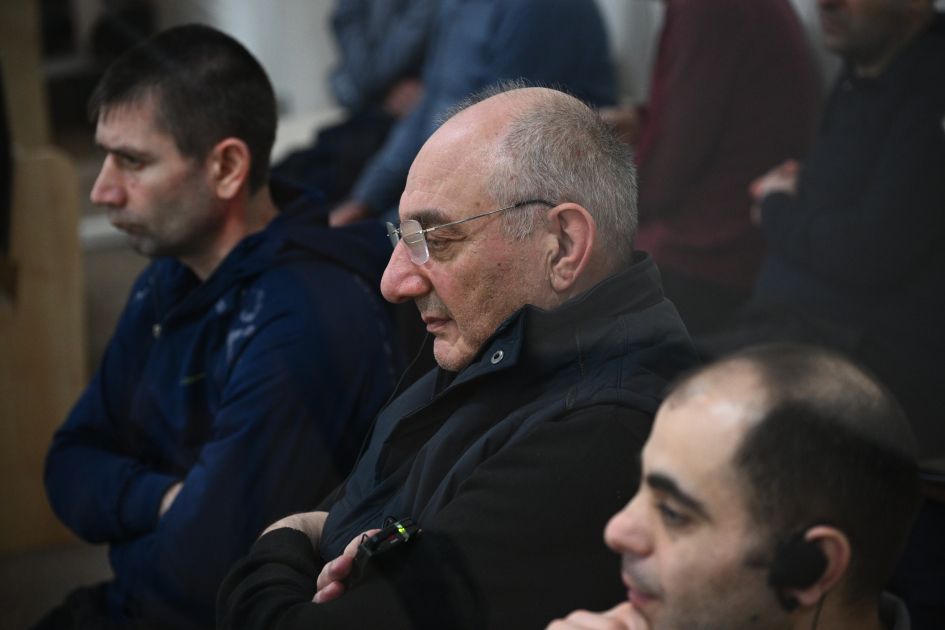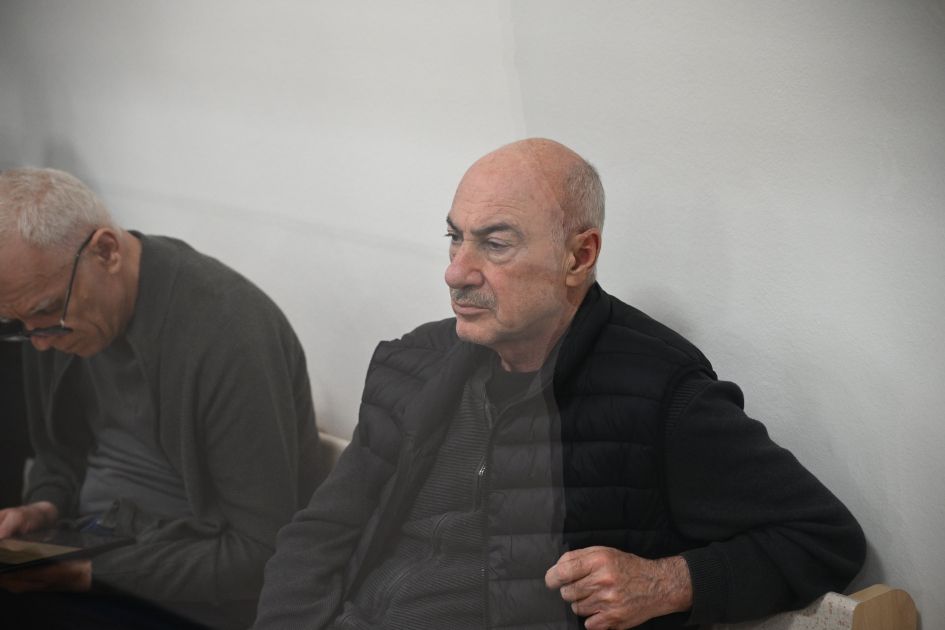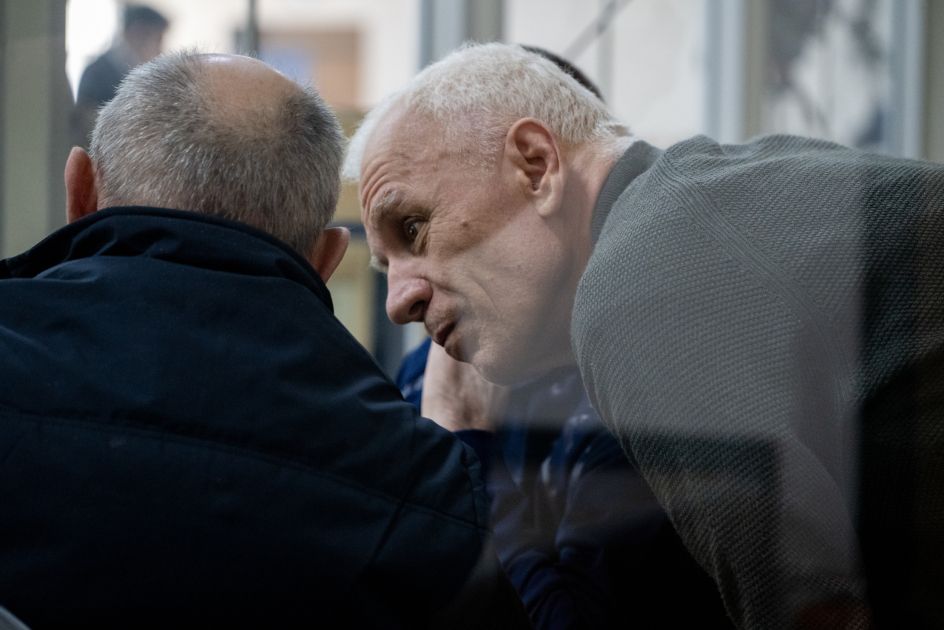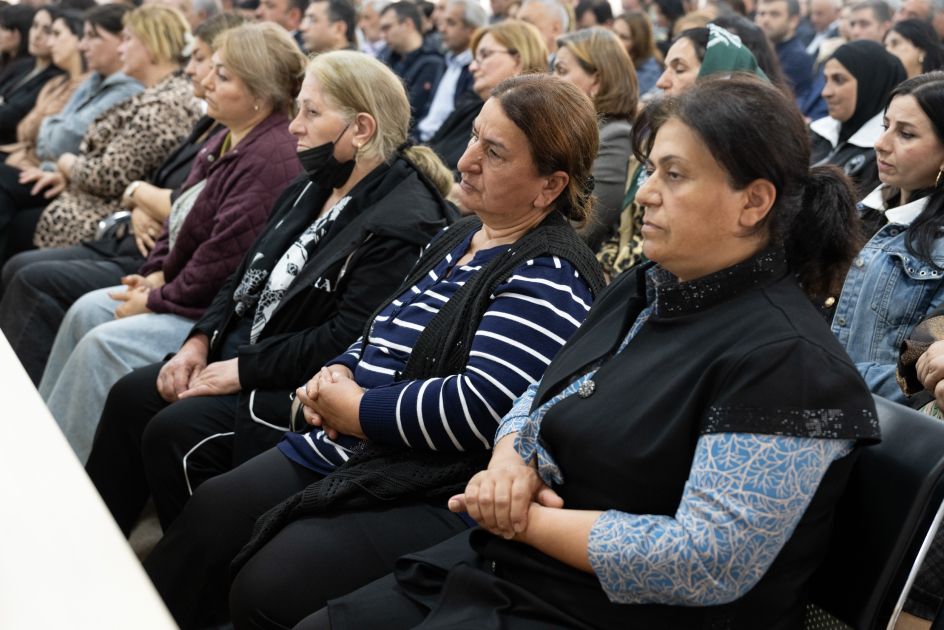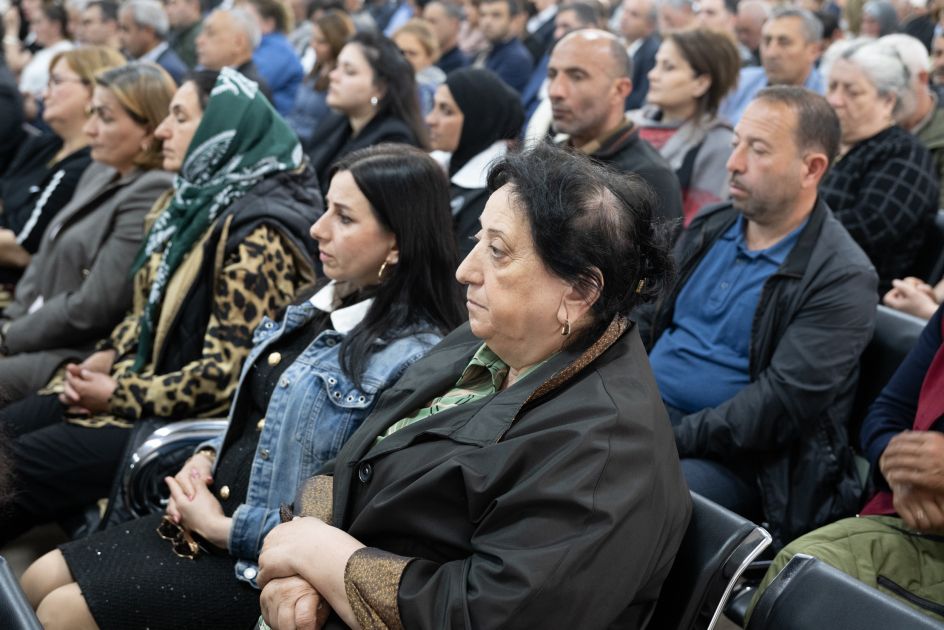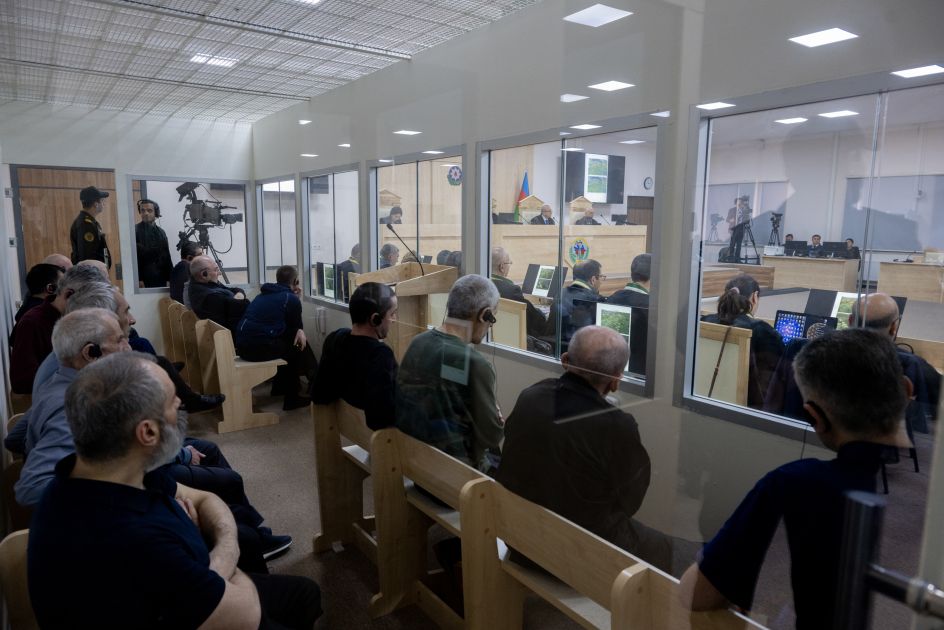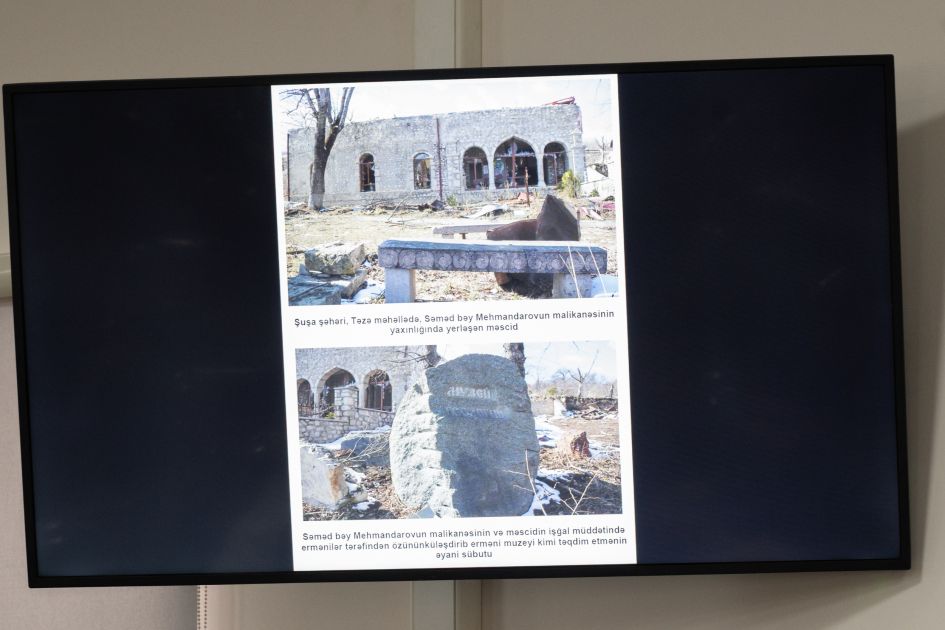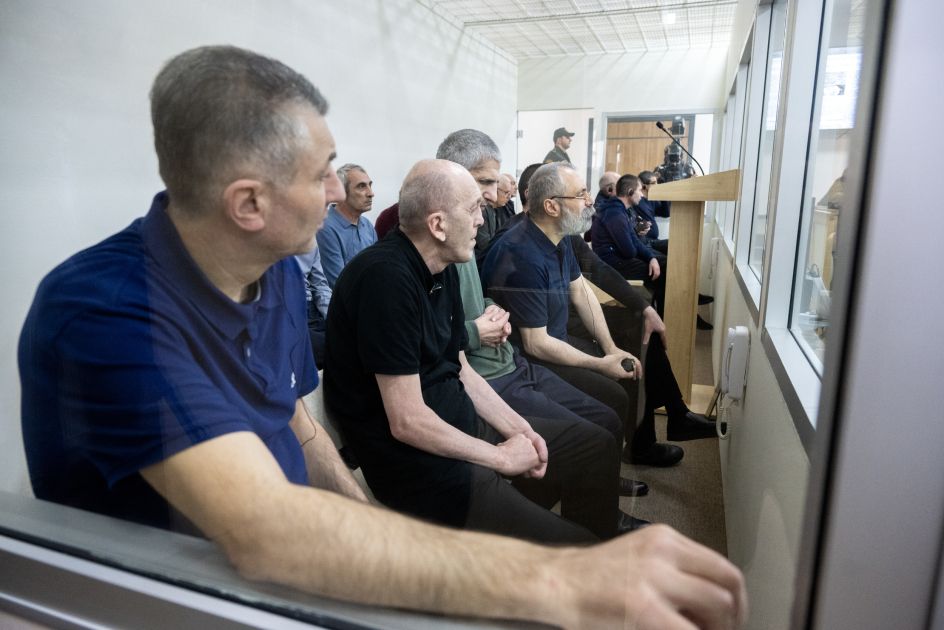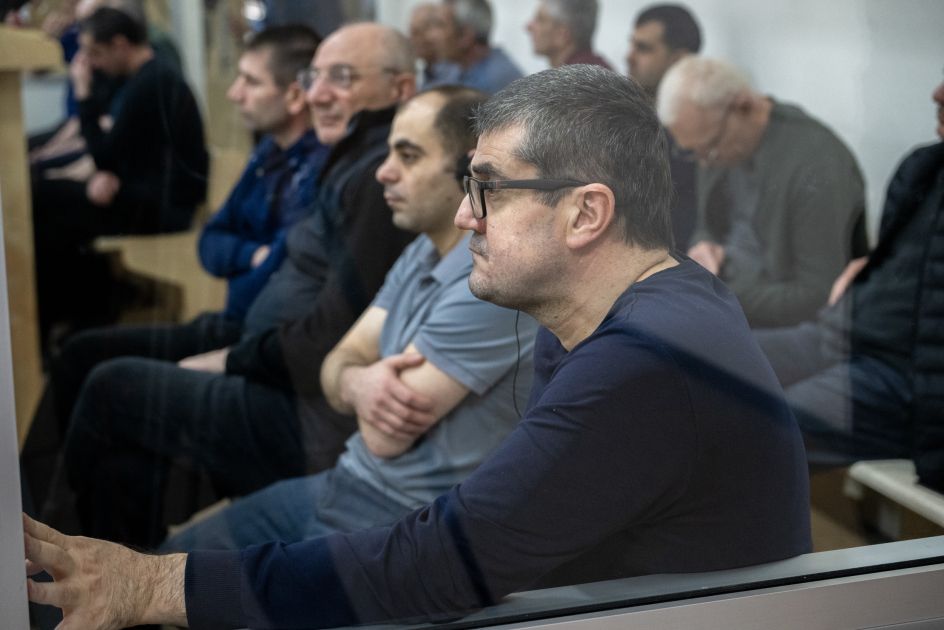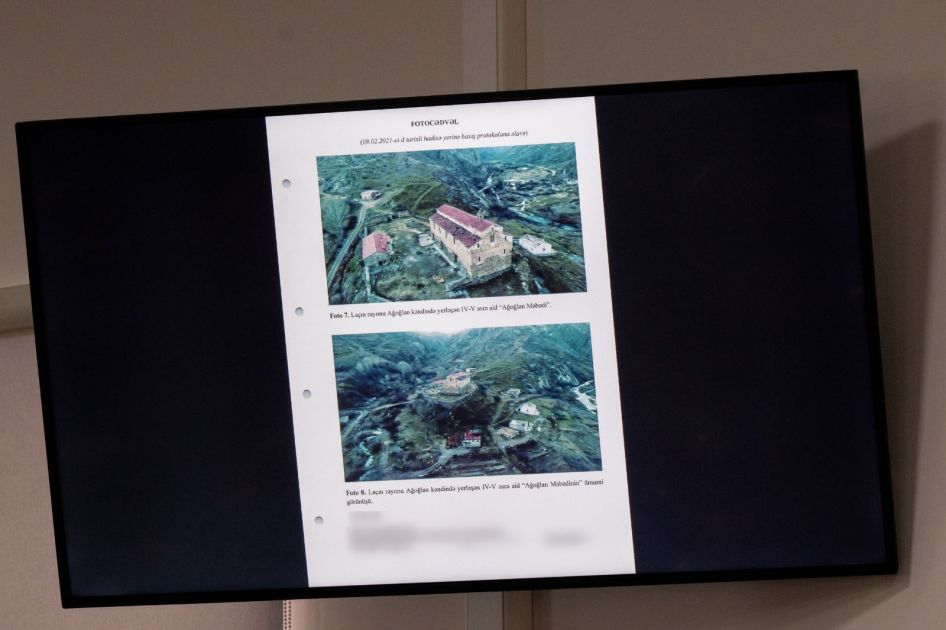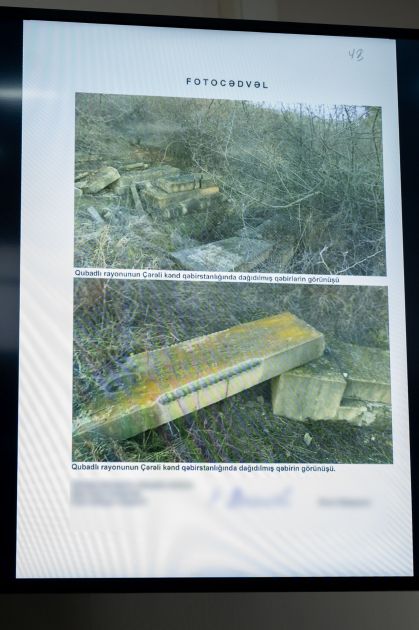Baku Court hears harrowing accounts of displacement, torture, and cultural erasure [PHOTOS]
![Baku Court hears harrowing accounts of displacement, torture, and cultural erasure [PHOTOS]](https://www.azernews.az/media/2025/05/16/17474168432117717024_1200x630.jpg)
The open trial proceedings continued on May 16 in the criminal cases against citizens of the Republic of Armenia — Arayik Harutyunyan, Arkadi Ghukasyan, Bako Sahakyan, Davit Ishkhanyan, David Babayan, Levon Mnatsakanyan, and others — who are accused of committing crimes against peace and humanity, war crimes, including preparing and waging an aggressive war, genocide, violations of the laws and customs of war, terrorism, financing of terrorism, usurpation and maintenance of power by force, and numerous other crimes as a result of Armenia's military aggression against Azerbaijan.
Azernews reports via Azerag that the trial is being held at the Baku Military Court under the chairmanship of Judge Zeynal Agayev, with Judges Jamal Ramazanov and Anar Rzayev presiding (reserve judge: Gunel Samedova). Each defendant has been provided with a translator and defense counsel.
Present at the session were the accused, their lawyers, some victims, their legal successors and representatives, as well as prosecutors representing the state.
Assistant to the Prosecutor General for Special Assignments, Tugay Rahimli, began presenting documents at the court detailing the destruction of cultural heritage in Azerbaijan’s formerly occupied territories.
One such document was an article published by a foreign media outlet on April 7, 1993, regarding the occupation of Kalbajar by Armenian forces. The article, titled “Attacks in the Caucasus Spark New Wave of Refugees,” was examined via translation. It stated that the Armenian army's "successful" advance into Kalbajar had forced thousands of Azerbaijanis to flee their homes. The article noted:
“On Monday, women and children tried to board helicopters in Kalbajar. About 39,000 people fleeing the fighting have registered at refugee centers.”
It also described the dire conditions of fleeing Azerbaijanis:
“Murov Pass, Azerbaijan, April 6, 1993 — They looked like black specks on the snow-covered plains. Three people descending the north slope of the 9,000-foot-high mountain pass were seeking shelter on their land. On a forest path, it turned out there were five of them — a man in his 30s exhausted, and two women in their 20s with infants in their arms. All were freezing and in shock after a six-day march in the mountains. The Armenian army’s seizure of Kalbajar over the weekend caused thousands to flee, triggering a massive displacement crisis.”
The occupation gave Armenian forces control over a strategic corridor connecting Armenia to Karabakh from north to south. A previous link had been established via Lachin, used to supply troops and equipment.
The article also emphasized that not only the Azerbaijani government, but eyewitnesses to the occupation confirmed the attack originated directly from Armenian territory. It highlighted that the new “northern corridor” into Karabakh spanned over 100 kilometers, effectively signaling the annexation of Kalbajar. The United States sharply condemned the attack.
“Today, the United States strongly condemned Armenia for seizing territory in northwestern Azerbaijan during the 11-day offensive. U.S. Secretary of State Warren Christopher, in a statement, called on the Armenian government to withdraw its forces immediately and noted that a protest letter was delivered to President Levon Ter-Petrosyan on Monday.”
Next, the court examined an article published in Izvestia on April 2, 1993. It stated:
“The Armenian army reached the surroundings of Kalbajar. The attack was launched from both Armenia and Karabakh. The region was completely encircled, and roads connecting it to the rest of Azerbaijan were cut off. The city was under constant rocket and artillery fire, and airstrikes. There were numerous civilian casualties, and thousands of people were unaccounted for.”
Thus, both foreign sources confirmed the Armenian armed forces’ role in the occupation of Kalbajar and the targeting of civilians.
The court also reviewed UN Security Council resolutions adopted in 1993 via translation from English.
Further, a report by an international human rights organization detailing Armenia’s brutal military campaign in Azerbaijani territories and the killing of civilians in 1993 was examined.
According to the report, Armenian forces expelled or took hostage the Azerbaijani civilian population from all seized territories in Karabakh. People attempting to flee were indiscriminately shot.
The report also described widespread looting and destruction of civilian property, particularly during the July 1993 occupation of Aghdam. It emphasized that indiscriminate attacks on civilians led to forced displacement. Civilians were taken hostage, their properties looted or burned.
Additionally, the report found that the Geneva Conventions were seriously violated by the Armenian military, which committed war crimes and breached military conduct rules. It documented the killing and mistreatment of hostages and prisoners of war.
Following this, the prosecution presented photo and video evidence of the destruction, desecration of cultural, historical, and religious monuments, and devastation of infrastructure, homes, and cemeteries across Azerbaijani cities, towns, and villages occupied by Armenia.
It was noted that during the occupation, mosques and religious sites were not only destroyed but also desecrated by keeping pigs in them.
The session also featured protocols and accompanying visual evidence documenting on-site visits to liberated areas.
Expert reports from the preliminary investigation were then read aloud.
It was noted that Azerbaijan’s cultural heritage, including historical and cultural monuments, had been deliberately targeted during this aggressive war — used for military purposes, deliberately burned, shelled, physically destroyed, looted, and vandalized — causing immense damage to the country and its people.
The next court hearing is scheduled for May 19.
Additionally, the court is examining the involvement of Armenian state officials, military personnel, and illegal armed groups — under direct leadership, orders (verbal and written), support (material, technical, human resources), centralized control, and strict supervision of the Armenian state — in crimes committed during the war of aggression.
Among those charged are Robert Kocharyan, Serzh Sargsyan, Vazgen Manukyan, Vazgen Sargsyan, Samvel Babayan, Vitali Balasanyan, Zori Balayan, Seyran Ohanyan, Arshavir Karamean, Monte Melkonian, and others — for their direct or indirect roles in the war.
Fifteen individuals of Armenian origin stand accused in this criminal case, including:
-
Arayik Vladimiri Harutyunyan
-
Arkadi Arshaviri Ghukasyan
-
Bako Sahaki Sahakyan
-
Davit Ruben Ishkhanyan
-
David Azat Manukyan
-
David Klim Babayan
-
Levon Henrikovich Mnatsakanyan
-
Vasili Ivan Beglaryan
-
Erik Robert Ghazaryan
-
Davit Nelson Allahverdyan
-
Gurgen Homer Stepanyan
-
Levon Romik Balayan
-
Madat Arakelovich Babayan
-
Garik Grigor Martirosyan
-
Melikset Vladimiri Pashayan
They are charged under multiple articles of the Criminal Code of the Republic of Azerbaijan, including:
-
Article 100 (Planning and waging an aggressive war)
-
Article 102 (Attacks on internationally protected persons or organizations)
-
Article 103 (Genocide)
-
Article 105 (Mass extermination of population)
-
Article 106 (Slavery)
-
Article 107 (Deportation or forcible transfer of population)
-
Article 109 (Persecution)
-
Article 110 (Enforced disappearances)
-
Article 112 (Unlawful deprivation of liberty under international law)
-
Article 113 (Torture)
-
Article 114 (Mercenarism)
-
Article 115 (Violations of the laws and customs of war)
-
Article 116 (Violation of international humanitarian law during armed conflict)
-
Article 118 (Pillage during war)
-
Article 120 (Premeditated murder)
-
Article 192 (Illegal entrepreneurship)
-
Article 214 (Terrorism)
-
Article 214-1 (Financing of terrorism)
-
Article 218 (Establishing a criminal organization)
-
Article 228 (Illegal acquisition and possession of weapons and explosives)
-
Article 270-1 (Acts threatening aviation safety)
-
Article 277 (Assassination of state or public figure)
-
Article 278 (Violent seizure and retention of power, violent change of constitutional order)
-
Article 279 (Creation of illegal armed groups)
And other provisions.
Here we are to serve you with news right now. It does not cost much, but worth your attention.
Choose to support open, independent, quality journalism and subscribe on a monthly basis.
By subscribing to our online newspaper, you can have full digital access to all news, analysis, and much more.
You can also follow AzerNEWS on Twitter @AzerNewsAz or Facebook @AzerNewsNewspaper
Thank you!

